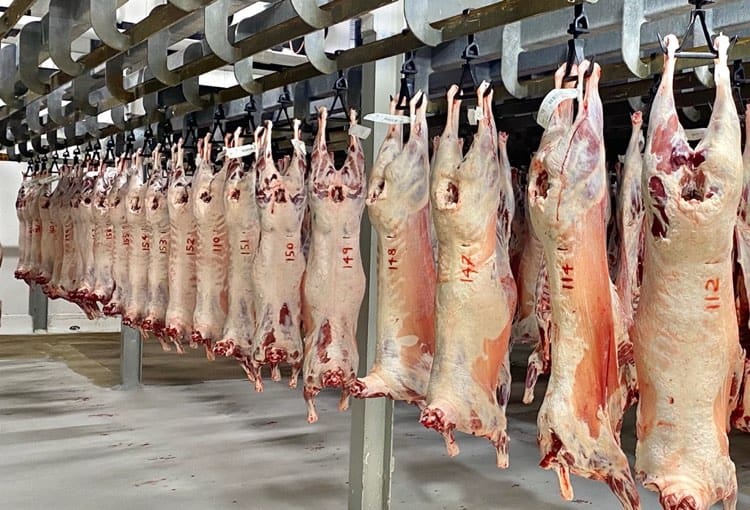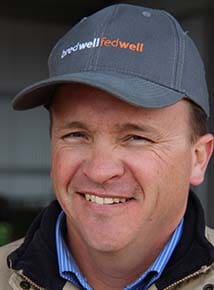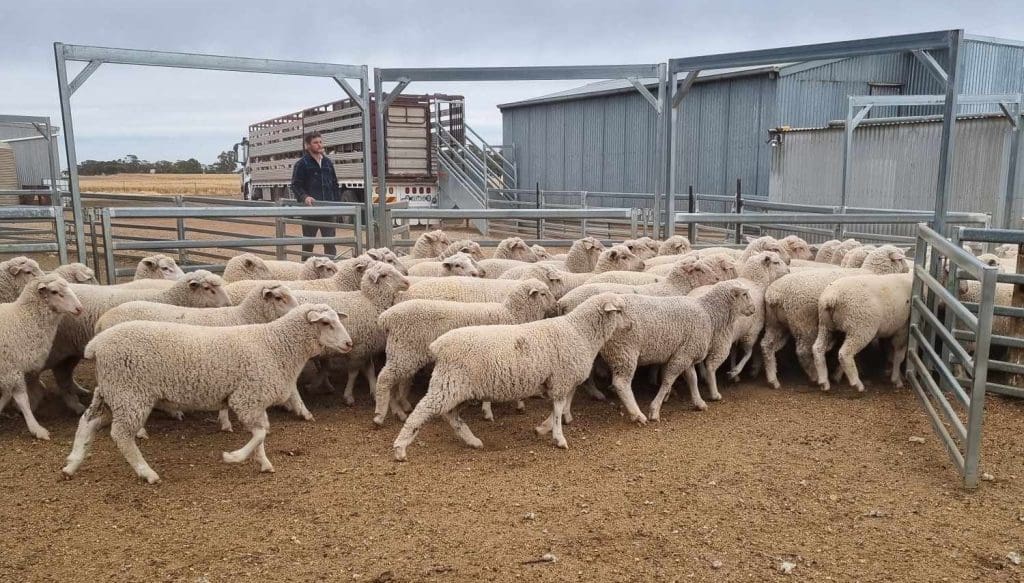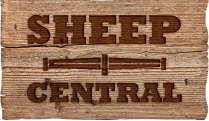
WHITE Suffolk producers – stud and commercial – are being offered an Australian-first opportunity to see how their lambs stack up compared to others within and outside the breed, under a major benchmarking study.
The Australian White Suffolk Association technical committee is working on a major new project, and it wants those using White Suffolk sires to put their hand up to get involved.
The AWSA carcase and eating quality benchmarking project aims to measure the most important eating quality trait – intramuscular fat – in flocks using White Suffolk sires.
The project aims to produce a dataset that will allow new benchmarks to be created for the White Suffolk breed. This will mean that producers can compare their lambs to whole industry benchmarks for carcase weight and IMF, and for the first time, they can also see where their lambs sit in comparison to the rest of the breed.

Hamish Chandler
AWSA technical committee member Hamish Chandler said the idea for the project came from a similar project run by Herefords Australia.
“From research done by the Sheep CRC and other projects, we know there is significant variation in genetics for eating quality traits, and we inadvertently make changes to traits as we select for other things,” he said.
“For example, lean meat yield is unfavourably related to IMF.
“As we push our LMY up, the related response in the IMF goes in the wrong direction,” he said.
“IMF breeding values were released in 2012, and we can show that the White Suffolk breed has made improvements to the trait since that time.
“But we are only getting to the stage in industry where processors can measure the trait at chain speed in abattoirs now that they have access to new technologies like MEQ probe and the SOMA device,” Mr Chandler said.
“Industry has been working on it for a long time, and it’s so good to see it as a reality.”
He said the project was about giving producers an opportunity to see how their lambs performed on the chain.
“This will allow us to see how White Suffolk lambs or White Suffolk-sired lambs compare to the rest of the industry, as well as people to benchmark their lambs against the rest of the breed.”
Mr Chandler said many things affected the eating quality of White Suffolk-sired lambs.
“Some of it is breeding, management, age and feeding – this will give us the opportunity to say to producers, ‘this is how your lambs compare to other White Suffolk lambs’.”
The project will compare lambs that are pure White Suffolk, but also producers who are using White Suffolk rams over other breeds, such as Merinos, and other terminal dams, as well as shedding breeds.
“The White Suffolk ram is really intended to be used as a terminal sire.
“I think it’s important to have as big a dataset as we can to get meaningful results,” he said.
“We then want to be able to account for the dam breed-type as part of the analysis.”
Mr Chandler said it also gave the breed the opportunity to compare White Suffolk-sired lambs to other breeds.
“It’s about doing a better job as individuals but also as a breed to keep pushing forward.”
He said lamb producers who were already processing animals through Gundagai Meat Processors or Thomas Foods International’s Stawell plant could already be receiving data.
“This will depend on whether people have spoken to GMP or TFI and requested data to be captured and recorded. In these cases, we’re not starting from zero.
“Initially, we are looking for expressions of interest to see how many people are interested in participating and sharing data.”
There is also the option for producers to be involved who have their lambs processed at other locations using mobile devices such as the SOMA.
“It will be harder to coordinate, but it is a feasible option with processor agreement.”
He said this was the first time a sheep breed association had done this kind of project.
“There have been other projects to capture eating quality data, but I don’t know of any breed-based data sets. This is the first time in Australia where the data is being aggregated for commercial lambs to help understand where the breed currently sits.”

Connecting studs with commercial clients
AWSA technical sub-committee chair Andrew Heinrich said the project was a great way for studs to connect with their commercial clients.
“We’re a breed that has good eating quality. This is a chance to give clients who buy rams from White Suffolk breeders to see where they sit on eating quality and how they are going compared to other breeders,” he said.
“Some clients might find they are on the right page, while others might find they are a bit off the mark and might make some changes.
“We’ve already got a database for our registered commercial base, and we believe it’s a chance to reach out and connect with those breeders, and give some feedback. I think it’s a great thing.”
He said it was also a chance for studs to include some of their commercials or culls and see how they perform.
Mr Heinrich said it was important that the project encompassed all producers using White Suffolk rams.
“Pretty much all our clients are crossbred breeders, and this project might show that they might need to look at the genetics on the dam side.”
He is hoping the project means White Suffolk as a breed can continue to improve its already renowned eating quality.
“If our product eats and tastes good, it’s a win-win for everyone.”
- Those who are keen to be involved can access the expression of interest here.
- Expressions of interest close on 18 July.

HAVE YOUR SAY